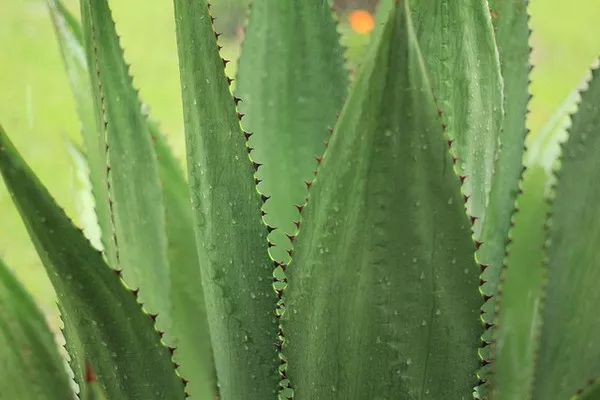Aloe plants, known for their succulent leaves and therapeutic properties, have captivated the interest of botanists and gardeners alike for centuries. Beyond their ornamental appeal and medicinal value, aloe plants possess a fascinating reproductive strategy that contributes to their resilience and propagation in diverse environments. In this article, we delve into the intricate mechanisms behind aloe plant reproduction, shedding light on the natural processes that drive the proliferation of these remarkable botanical wonders.
The Aloe Genus: A Brief Overview
Before delving into the specifics of aloe plant reproduction, it is essential to understand the genus to which these plants belong. Aloe is a genus comprising over 500 species of succulent plants, primarily indigenous to Africa, Madagascar, and the Arabian Peninsula. These plants belong to the family Asphodelaceae and are characterized by their rosette-forming, fleshy leaves, often adorned with spines along the margins.
Vegetative Reproduction: Cloning Through Offshoots
A prominent feature of aloe plant reproduction is its ability to propagate through vegetative means. One of the most common methods of vegetative reproduction in aloes is through the generation of offshoots, also known as pups or suckers. Offshoots emerge from the base of mature aloe plants, typically near the soil surface, and develop into genetically identical clones of the parent plant.
The process of offshoot formation begins with the activation of dormant buds, often triggered by environmental cues such as temperature, moisture, or photoperiod. Once activated, these buds undergo rapid growth, giving rise to new shoots that gradually develop into independent plants. Unlike sexual reproduction, which involves the fusion of gametes and genetic recombination, vegetative reproduction through offshoots maintains the genetic integrity of the parent plant, resulting in offspring with identical traits.
Seed Propagation: Unraveling the Sexual Aspect
While vegetative reproduction predominates in aloe plants, sexual reproduction through seeds also plays a significant role in their life cycle. Aloe flowers, borne on tall stalks known as inflorescences, serve as the site for sexual reproduction, attracting pollinators such as bees, birds, and insects with their vibrant colors and nectar rewards.
The process of seed formation in aloe plants follows a well-defined sequence of events, beginning with the development of male and female reproductive organs within the flower. Aloe flowers are typically bisexual, containing both male (stamens) and female (pistil) reproductive structures. Pollination, facilitated by visiting pollinators, leads to the transfer of pollen from the stamens to the stigma of the pistil, initiating fertilization.
Following successful pollination, the fertilized ovules within the ovary develop into seeds through a process known as embryogenesis. The seeds, encapsulated within protective capsules or pods, mature over time, eventually dispersing from the parent plant to colonize new habitats. Seed dispersal mechanisms vary among aloe species and may involve factors such as wind, water, or animal vectors.
Environmental Factors Influencing Reproduction
The reproductive success of aloe plants is intricately linked to environmental factors that influence both vegetative and sexual reproduction. Adequate sunlight, optimal temperature, and appropriate moisture levels are essential for stimulating vegetative growth and promoting the emergence of offshoots. Additionally, nutrient-rich soil and periodic fertilization contribute to the vigor of aloe plants, enhancing their capacity for reproduction.
In the context of sexual reproduction, environmental cues such as temperature fluctuations and seasonal changes play a crucial role in synchronizing flowering events and maximizing pollination efficiency. Aloe species exhibit diverse flowering patterns, with some flowering year-round in favorable climates, while others exhibit seasonal or opportunistic flowering in response to environmental stimuli.
Human Intervention: Cultivation and Propagation Techniques
Human intervention has significantly influenced the propagation of aloe plants, with cultivation practices and propagation techniques evolving to meet various needs, ranging from ornamental gardening to commercial production of aloe-based products. Horticulturalists and gardeners employ several methods to propagate aloe plants, including division of offsets, seed sowing, and tissue culture.
Division of offsets, also known as division or separation, involves carefully detaching and replanting offshoots from the parent plant to establish new individuals. This method is widely practiced due to its simplicity and reliability, enabling rapid multiplication of aloe populations with minimal resources.
Seed sowing, although less commonly employed due to the slower growth rate and variability associated with sexual reproduction, remains a viable option for propagating aloe plants, particularly for breeding purposes and species conservation efforts. Controlled pollination and seed collection ensure genetic diversity and the preservation of desirable traits within aloe populations.
Tissue culture, a sophisticated propagation technique utilized in commercial settings and research laboratories, involves the aseptic culture of plant cells or tissues in nutrient-rich media under controlled environmental conditions. Tissue culture enables mass propagation of uniform aloe plants with enhanced disease resistance and productivity, offering a sustainable approach to meet market demand for aloe-derived products.
Conclusion
In conclusion, the reproductive strategy of aloe plants reflects the adaptability and resilience of these remarkable succulents in diverse ecological settings. Through a combination of vegetative and sexual reproduction mechanisms, aloe plants ensure their survival and proliferation in habitats ranging from arid deserts to subtropical regions. Understanding the intricacies of aloe plant reproduction not only enriches our appreciation for these botanical wonders but also informs sustainable cultivation practices and conservation efforts aimed at preserving their genetic diversity and ecological significance. As guardians of nature’s green treasures, let us continue to explore, nurture, and celebrate the beauty and complexity of aloe plant reproduction.


